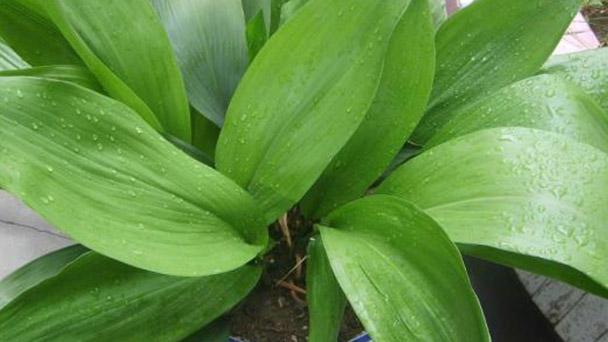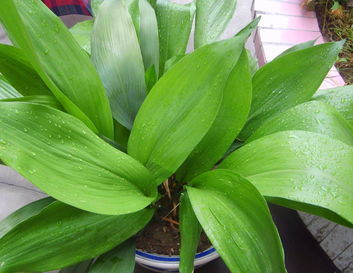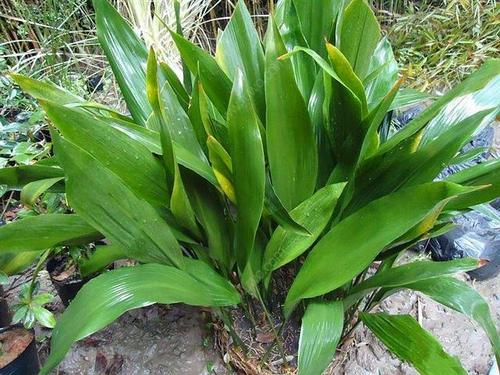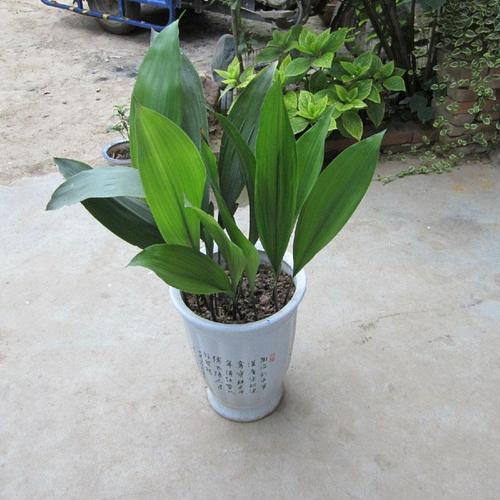How to care for Aspidistra
Written by Maggie
Jan 11 2021

The leaves are green and shiny, and it looks amazing. Many people choose Aspidistra to pack dumplings in The Dragon Boat Festival. So how to care for Aspidistra if its leaf tips turn yellow or it doesn't grow new buds? Let's take a look!

How to care for Aspidistra leaf tips yellowing
1. Light for Aspidistra
If the sunlight is too intense, Aspidistra's leaves will get burnt, and the tips will start to turn yellow. Aspidistra can't carry out photosynthesis because of insufficient light; lack of nutrition; leaf tips will turn yellow. Aspidistra likes warm, wet, Aspidistra. Put the plants to grow in a cool and ventilated environment. Give them a proper amount of weak light.
2. Water for Aspidistra
Aspidistra is afraid of flooding. Being immersed in rain or overwatering will lead to low water in the basin and root rot, which will affect the absorption of nutrients in the roots of plants. Lack of nutrients will cause leaf yellowing. If there is water in the bottom of the basin, the excess water should be poured out in time, and the pot should be placed in a cool and ventilated place. If it is serious, the basin should be changed.
3. Fertilizing for Aspidistra
Too much fertilization or too much fertilizer will burn Aspidistra's roots and rot the roots, thereby affecting plant growth and causing leaf tips to turn yellow. If the fertilizer is too much, you can dilute the right amount of watering. If the situation is more serious, fertilizer is too thick, you need to replace the basin soil. Aspidistra doesn't require much fertilizer. Usually I'm going to apply it once every 50 days or so.
Before Aspidistra planting, use loose, porous, acidic soil to help plants grow. During the maintenance, if any natural brown or old leaves occur, It is necessary to remove them promptly. To prevent anthrax, botrytis cinerea and leaf spot, keep the environment ventilated for a long time and spray the plants with chlorothalonil or carbendazim solution for disinfection.

How to care for Aspidistra doesn’t grow new buds
1. Temperature for Aspidistra
Aspidistra is a warm-liking plant. The best temperature to grow is 10 to 25 degrees. If you're going to worry about your Aspidistra: why isn't it going to grow new buds? We need to know whether its growth temperature is not appropriate. If the temperature is above 30℃ in summer or below 3℃ in winter, it's going to cause Aspidistra to not grow new buds.
【 Solution 】 Put Aspidistra into a suitable temperature to grow; preferably 10 ~ 25℃; avoid either too high or too low temperature.
2. Light for Aspidistra
Aspidistra likes dark, but it's not allowed to grow in a dark environment for long. Plants need sunlight to promote photosynthesis to grow and germinate. Lack of sunlight will affect Aspidistra's new shoots.
【 Solution 】 Put Aspidistra in a place where sunlight can be scattered, and give it proper sunlight to photosynth and promote its normal growth. Prevent Aspidistra from bad growth due to direct sun in summer and autumn.
3. Nutrition for Aspidistra
When Aspidistra's new shoots grow, it takes in enough nutrients. If the soil in the basin is agglomerating, it will affect Aspidistra's respiration; Moreover, it is difficult to supply enough nutrients because of the decrease of soil nutrients. At the same time, too many branches and leaves will cause the plants to consume too much nutrients, and it is difficult to add new buds to Aspidistra.
[Solution] Regularly loosen any Aspidistra's soil; Remember to replace it; The soil is mainly fertile and sandy; at the same time, regularly trim Aspidistra's dead branches and yellow leaves.
4. Flowerpot
There are also requirements on the growing environment of Aspidistra. Too small a pot is not suitable for Aspidistra's growth, and there is not enough space for it to grow; otherwise, Aspidistra will not grow any new shoots.
[Solution] We need to change basins within 1 to 2 years. We need to choose a large porous flowerpot or clay ceramic basin to plant Aspidistra, so as to provide enough space for its growth.

Latest Updated
- Benefits of Bugleweed - 7 Science-backed Health Benefits
- Bugleweed Dangers & Side Effects - Is It Poisonous?
- How to Plant Evergreen Trees - What You Should Know
- When to Plant Evergreens - Grow Guide for Evergreen Trees
- 12 Wonderful Evergreen Shrubs for Your Garden
- 12 Popular Evergreen Plants with Pictures for Beginners
- When And How To Prune A Lilac Bush Like a Pro
- How to Grow & Care for Lilac Vine (Hardenbergia Violacea)
- Japanese Lilac Tree (Syringa Reticulata) Care & Propagation Guide
- Shumard Oak Pros and Cons - What to Know
Popular Articles
- Winter maintenance of Antirrhinum Majus
- How to Grow Terminalia Mantaly Tree
- How to Grow and Care for Crossostephium Chinense
- How to grow Antirrhinum Majus in spring
- Peristeria Elata (Dove Orchid) Profile: Info & Care Guide
- Underwatered Snake Plant (Sansevieria Trifasciata) - Signs And How To Fix
- How to Care for Brazilian Jasmine Plant (Mandevilla Sanderi)
- How to Grow & Care for Graptopetalum Purple Delight in Summer
- Rosa Chinensis (China Rose): Plant Growing & Care Tips
- How to Care for Baby Sun Rose (Aptenia Cordifolia)